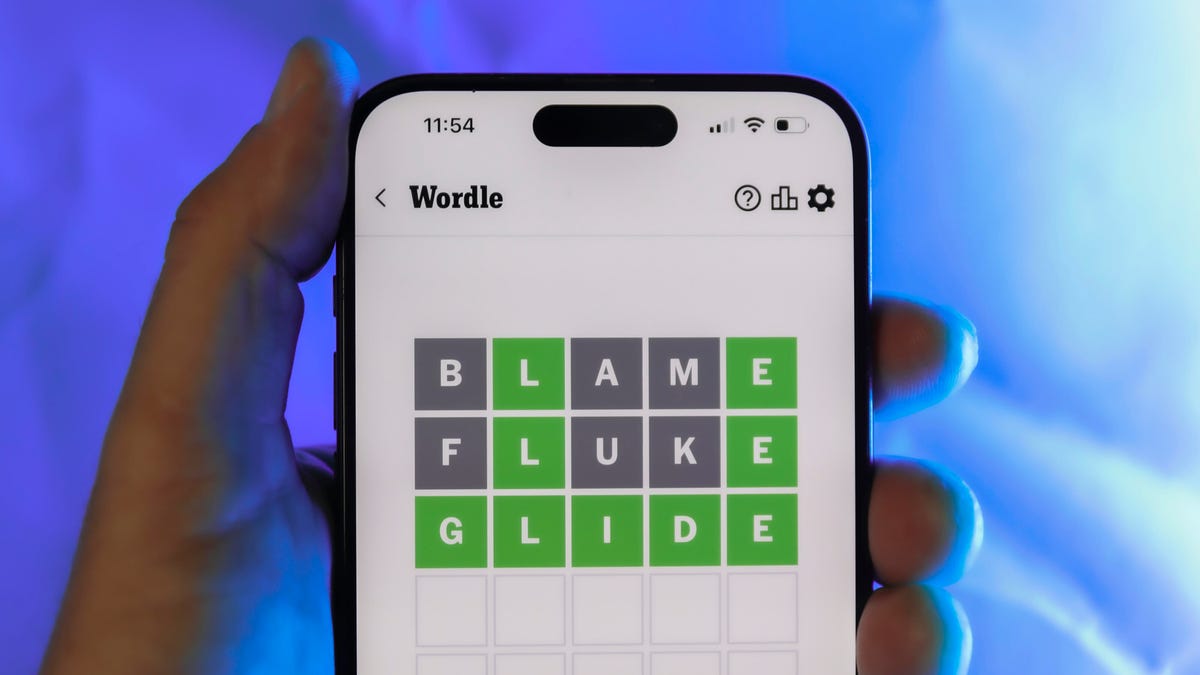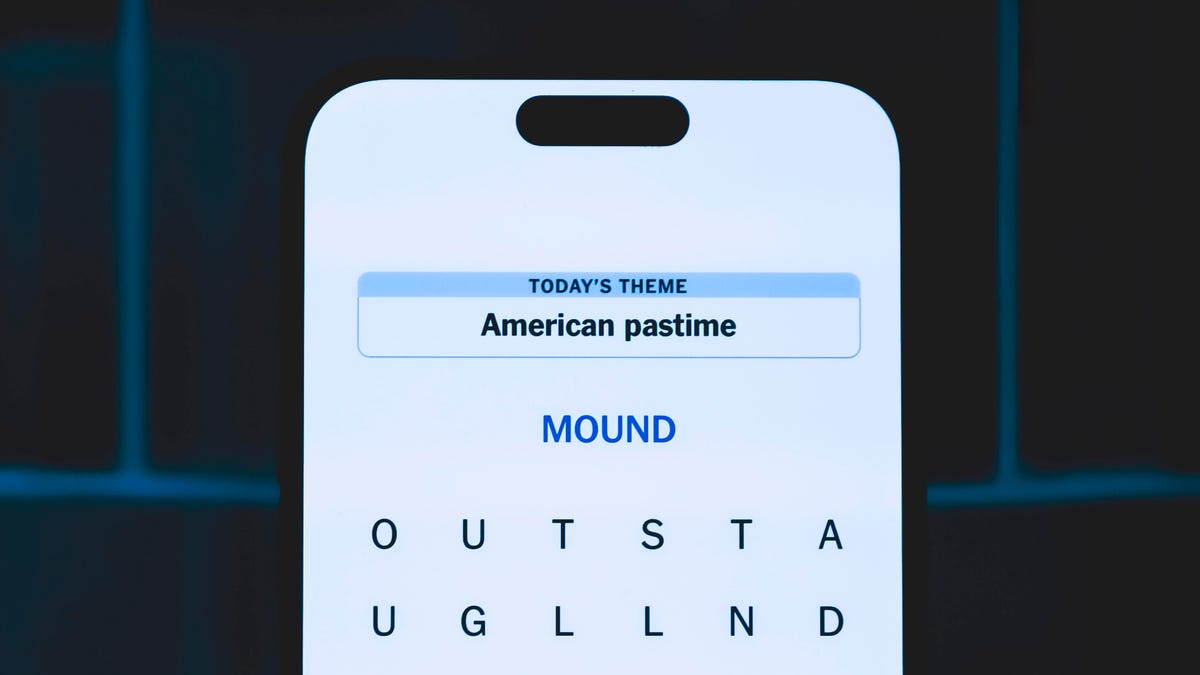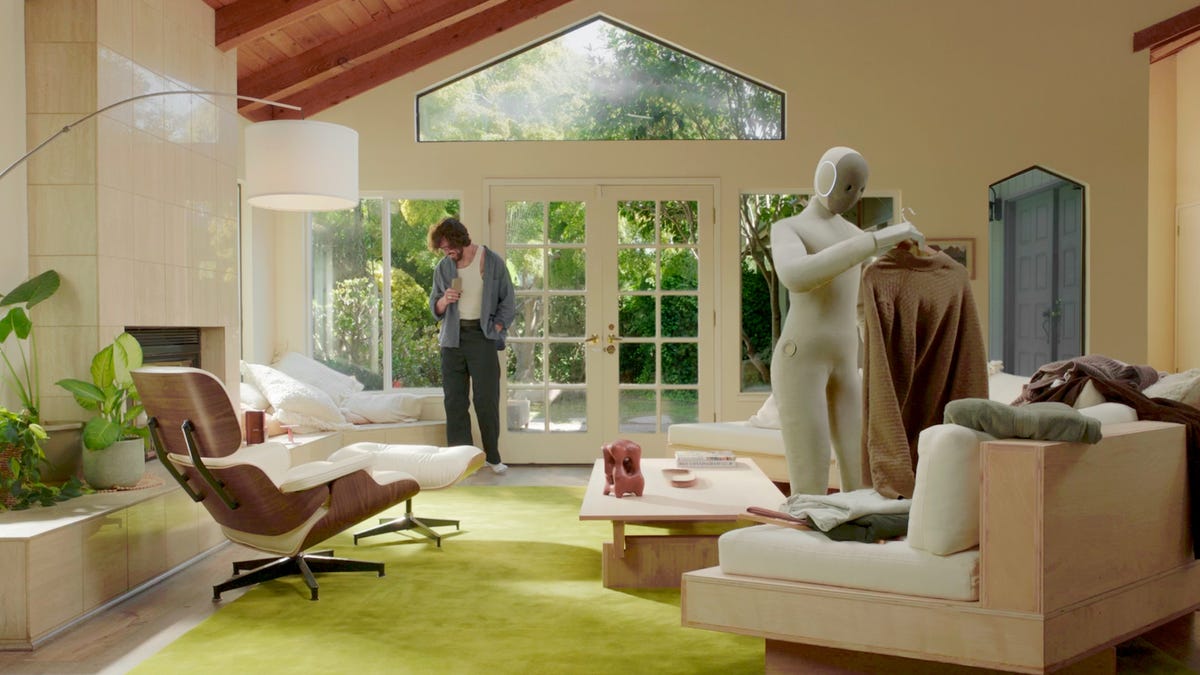Technologies
Why Apple Hasn’t Released the iPhone Fold… Yet
Commentary: Apple debuted the iPhone 14 Pro in September, but a foldable iPhone still feels like a longshot.

This story is part of Focal Point iPhone 2022, CNET’s collection of news, tips and advice around Apple’s most popular product.
Apple’s new iPhone 14 line includes some of the biggest hardware updates made in years, including the iPhone 14 Pro’s redesigned cutout for Dynamic Island’s contextual notifications and an iPhone 14 Plus model. But among the changes, Apple has not yet confirmed if a rumored foldable iPhone is in development. This is particularly curious as Samsung continues to refine its foldable phone lineup with the release of the Galaxy Z Flip 4 and the Galaxy Z Fold 4 back in August.
Samsung isn’t the only company making phones with foldable screens. There’s the Motorola Razr. And outside the US, Huawei and Xiaomi also have foldable phones. Which leaves us with an obvious question: Where’s Apple’s foldable iPhone?
Apple doesn’t comment on future products
The first thing to consider is that Apple doesn’t announce products until they’re ready. OK, there was the AirPower wireless charging pad. But otherwise Apple isn’t going to tell us it’s working on a foldable iPhone or confirm rumors.
Next, Apple typically positions products as a solution to a problem, highlighting quality and innovation.
The Galaxy Z Fold seems less like an answer to a problem and more of a «look at this tech wizardry, what can we do with it?!» And the cool-factor, as ingenious as it is, comes at the expense of features we expect from regular phones, including battery life, ergonomics, software experience and price. The Galaxy Z Flip solves the problem of portability, but it comes with some of the same drawbacks as the Fold, particularly around battery life and camera quality.
To be fair, the Galaxy Z Fold 3 took a significant step forward by embracing its large main screen and adding support for Samsung’s S Pen stylus. And the Z Fold 4’s improved Flex Mode for apps seems like it might tip the balance, making the Fold more useful than just cool.
If Apple were to release a foldable iPhone, what problem would it solve? Could it be an iPhone Flip, replacing the iPhone 13 Mini by offering you a big screen that’s still pocket-friendly? Or will it be an iPhone Fold — more like an iPad Mini that folds in half, making its closed size more like the iPhone 13 Pro Max? Or will we see a design that doesn’t exist yet? What about an iPhone Roll, where the screen unrolls like an expanding window shade? That’s where rumors start to enter the picture.
iPhone Fold rumors
Back in January 2021, Mark Gurman wrote for Bloomberg that Apple «has begun early work on an iPhone with a foldable screen, a potential rival to similar devices from Samsung.»
And in May of 2021, analyst Ming-Chi Kuo said, as reported by MacRumors, that «Apple will likely launch a foldable iPhone with an 8-inch QHD Plus flexible OLED display in 2023.» He revised his prediction, in a tweet this past April, to say that it might be 2025 before there’s a foldable screen device from Apple. It’s also worth noting that Kuo’s tweet was on April 1, which means it could have been an April Fool’s joke.
Both Gurman and Kuo have excellent track records when it comes to Apple rumors. So if these reports are accurate, we’ll see a foldable iPhone in 2025. It will be about the size of an iPad Mini and it’ll fold in half. End of story. But hold on.
How to make a foldable iPhone
Before Apple makes a foldable iPhone, it has to figure out how to make a foldable iPhone. Research company Omdia claims that in 2021, 11.5 million foldable phones shipped. Apple sells hundreds of millions of iPhones a year. So if it makes a foldable iPhone, it has to be certain that it can manufacture the phones at the same quality and in a high enough quantity to meet demand. More times than not when Apple introduces a radical hardware change — like 2014’s iPhone 6 Plus and its larger screen — those models are hard to find at launch because they sell out quickly. Sometimes they’re given a later release date, as we saw with the iPhone 12 Mini and 12 Pro Max launch.
Then there’s the physical complexity that needs to be considered. Foldable phones have numerous mechanical parts that could malfunction or wear, such as hinge components that keep dust out and the various layers behind the folding screen. In fact, when journalists tested review units of the original Galaxy Fold, the device was plagued by hinge and display failures. That was years ago, of course, and Samsung has since fixed those issues. But it shows what can happen with first-gen products.
If a foldable iPhone is in the works, Apple will likely innovate its design to minimize the parts and mechanisms involved, which should reduce the possibility of the phones failing because something breaks. The Cupertino company has a great track record in this area.
When Apple released the iPhone 7, it replaced the home button with a faux home button so there was one less mechanical part that could possibly break. And if you’ve ever owned or used a MacBook, you know Apple is at the top of its game when it comes to hinge design, and dependability. Apple also sells AppleCare Plus service — and includes a global infrastructure to support it — which could help relieve concerns over problems or accidental damage, should it release a foldable phone.
iOS and iPadOS would need to be revamped
And then there’s the software. One UI, Samsung’s name for its take on Android, has to be the most under-appreciated aspect of the Galaxy Z Flip and Z Fold. These new designs would have to simultaneously do all the things we expect from current phones while also creating new functionality that takes advantage of their folding screens. They’d also have to do all of these things flawlessly without any bugs or hiccups.
For instance, the Galaxy phones’ Flex Mode has been around for years. Essentially, when the Fold or Flip are folded into an L-shape, like a mini laptop, the software shifts an app to the top half of the screen while providing functionality at the bottom. Sounds cool and full of possibilities, right?
Well, until this year that functionality has been limited. That’s why it matters that Samsung’s Z Flip 4 and Z Fold 4 let you turn the bottom half of their screens into touchpads while they’re in Flex Mode. The company is now showing an added benefit of the fold.
I’d like to see even more software optimized for foldable phones. And I expect Apple will face the same challenges as Samsung did, especially when adapting iOS and iPadOS.
In recent years, iOS and iPadOS have drifted apart as Apple has created more iPad-specific features that wouldn’t make sense on an iPhone. A foldable iPhone, especially in the style of a Galaxy Z Fold 4, would require a reunion of the two operating systems. Or, Apple would have to develop a new software platform that can morph between a tablet and phone mode.
Apple would likely develop a unique software feature (think iMessage or Portrait Mode) to help make its foldable phone standout from what everyone else is doing.
How much would you pay for a foldable iPhone?
Foldable phones ain’t cheap. The Galaxy Z Fold 4 starts at $1,800 and the Galaxy Z Flip 4 at $1,000. And it’s no surprise that prices for Apple products are at the higher end. So if an iPhone 14 Pro that doesn’t fold in half already costs $1,000, what would be the price for one that does?
For a foldable iPhone to be successful, Apple would need to create a problem-solving design, scale manufacturing without sacrificing quality and develop hardware along with software that make the most of its foldable build. The price would also have to be premium, but not too high.
So where’s the foldable iPhone? Still in the oven.
Technologies
Today’s Wordle Hints, Answer and Help for Nov. 24, #1619
Today’s Wordle is tricky. Here are hints, answers and help for Nov. 24, #1619.

Looking for the most recent Wordle answer? Click here for today’s Wordle hints, as well as our daily answers and hints for The New York Times Mini Crossword, Connections, Connections: Sports Edition and Strands puzzles.
Today’s Wordle puzzle is a little tricky. If you need a new starter word, check out our list of which letters show up the most in English words. If you need hints and the answer, read on.
Today’s Wordle hints
Before we show you today’s Wordle answer, we’ll give you some hints. If you don’t want a spoiler, look away now.
Wordle hint No. 1: Repeats
Today’s Wordle answer has no repeated letters.
Wordle hint No. 2: Vowels
Today’s Wordle answer has two vowels.
Wordle hint No. 3: First letter
Today’s Wordle answer begins with D.
Wordle hint No. 4: Last letter
Today’s Wordle answer ends with H.
Wordle hint No. 5: Meaning
Today’s Wordle answer is a flour-based mixture used to bake bread.
TODAY’S WORDLE ANSWER
Today’s Wordle answer is DOUGH.
Yesterday’s Wordle answer
Yesterday’s Wordle answer, Nov. 23, No. 1618 was BUNNY.
Recent Wordle answers
Nov. 19, No. 1614: MAKER
Nov. 20, No. 1615: GRAVE
Nov. 21, No. 1616: VOWEL
Nov. 22, No. 1617: THICK
Technologies
Today’s NYT Strands Hints, Answers and Help for Nov. 24, #631
Today’s Strands puzzle has fun theme, or so says a former farm girl. Here are hints, answers and help for Nov. 24, #631.

Looking for the most recent Strands answer? Click here for our daily Strands hints, as well as our daily answers and hints for The New York Times Mini Crossword, Wordle, Connections and Connections: Sports Edition puzzles.
Today’s NYT Strands puzzle has a fun theme, or so says this former farm girl. Some of the answers are difficult to unscramble, so if you need hints and answers, read on.
I go into depth about the rules for Strands in this story.
If you’re looking for today’s Wordle, Connections and Mini Crossword answers, you can visit CNET’s NYT puzzle hints page.
Read more: NYT Connections Turns 1: These Are the 5 Toughest Puzzles So Far
Hint for today’s Strands puzzle
Today’s Strands theme is: Horsing around.
If that doesn’t help you, here’s a clue: Giddy up!
Clue words to unlock in-game hints
Your goal is to find hidden words that fit the puzzle’s theme. If you’re stuck, find any words you can. Every time you find three words of four letters or more, Strands will reveal one of the theme words. These are the words I used to get those hints but any words of four or more letters that you find will work:
- GALE, REGAL, GAIN, ROOM, MOOR, JOCK, WARN, NEAT, WART, FIRE, QUIET, QUITE
Answers for today’s Strands puzzle
These are the answers that tie into the theme. The goal of the puzzle is to find them all, including the spangram, a theme word that reaches from one side of the puzzle to the other. When you have all of them (I originally thought there were always eight but learned that the number can vary), every letter on the board will be used. Here are the nonspangram answers:
- GROOM, JOCKEY, FARRIER, VETERINARIAN, WRANGLER
Today’s Strands spangram
Today’s Strands spangram is EQUESTRIAN. To find it, start with the E that’s four letters down on the far-left row, and wind up and over.
Don’t miss any of our unbiased tech content and lab-based reviews. Add CNET as a preferred Google source.
Technologies
Before You Order a $20K Home Robot, There’s Something You Should See
It’s designed to do your chores — with some help from folks behind the curtain.

The robot stands 5 feet 6 inches tall, weighs about as much as a golden retriever and is nearly the price of a brand-new budget car.
This is Neo, the humanoid robot. It’s billed as a personal assistant you can talk to and eventually rely on to handle everyday tasks, including loading your dishwasher and folding your laundry.
Neo doesn’t come cheap: it’ll cost you $20,000. And even then, you’ll still have to train this new home bot, and possibly need a remote assist as well.
If that still sounds enticing, preorders are now open (for $200 down). You’ll be signing up as an early adopter for what Neo’s maker, a California-based company called 1X, is calling a «consumer-ready humanoid.» That’s opposed to other humanoids under development from the likes of Tesla and Figure, which are, for the moment at least, more focused on factory environments.
Neo is a whole order of magnitude different from robot vacuums like those from Roomba, Eufy and Ecovacs, and embodies a long-running sci-fi fantasy of robot maids and butlers doing chores and picking up after us. If this is the future, read on for more of what’s in store.
Don’t miss any of our unbiased tech content and lab-based reviews. Add CNET as a preferred Google source.
What the Neo robot can do around the house
The pitch from 1X is that Neo can do all manner of household chores: fold laundry, run a vacuum, tidy shelves and bring in the groceries. It can open doors, climb stairs and even act as a home entertainment system.
Neo appears to move smoothly, with a soft, almost human-like gait, thanks to 1X’s tendon-driven motor system that gives it gentle motion and impressive strength. The company says it can lift up to 154 pounds and carry 55 pounds, but it is quieter than a refrigerator. It’s covered in soft materials and neutral colors, making it look less intimidating than metallic prototypes from other companies.
The company says Neo has a 4-hour runtime. Its hands are IP68-rated, meaning they’re submersible in water. It can connect via Wi-Fi, Bluetooth and 5G. For conversation, it has a built-in large language model (LLM), the same sort of AI technology that powers ChatGPT and Gemini.
The primary way to control the Neo robot will be by speaking to it, just as if it were a person.
Still, Neo’s usefulness today depends heavily on how you define useful. The Wall Street Journal’s Joanna Stern got an up-close look at Neo at 1X’s headquarters and found that, at least for now, it’s largely teleoperated, meaning a human often operates it remotely using a virtual-reality headset and controllers.
«I didn’t see Neo do anything autonomously, although the company did share a video of Neo opening a door on its own,» Stern wrote last week. 1X CEO Bernt Børnich reportedly told her that Neo will do most things autonomously in 2026, though he also acknowledged that the quality «may lag at first.»
The company’s FAQ says that if there’s a chore request Neo doesn’t know how to accomplish, you can schedule an expert from 1X to help the robot «learn while getting the job done.»
What you need to know about Neo and privacy
Part of what early adopters are signing up for is to allow Neo to learn from their environment, so that future versions can operate more independently.
That learning process raises questions about privacy and trust. The robot uses a mix of visual, audio and contextual intelligence — meaning it can see, hear and remember interactions with you in your home.
«If you buy this product, it is because you’re OK with that social contract,» Børnich told the Journal. «It’s less about Neo instantly doing your chores and more about you helping Neo learn to do them safely and effectively.»
Neo’s reliance on human operation behind the scenes prompted a response from John Carmack, a computer industry luminary known for his work with VR systems and the lead programmer of classic video games, including Doom and Quake.
«Companies selling the dream of autonomous household humanoid robots today would be better off embracing reality and selling ‘remote operated household help’,» he wrote in a post on the X social network.
1X says it’s taking steps to protect your privacy: Neo listens only when it recognizes it’s being addressed, and its cameras will blur out humans. You can restrict Neo from entering or viewing specific areas of your home, and the robot will never be teleoperated without owner approval, the company says.
But inviting an AI-equipped humanoid to observe your home life isn’t a small step.
The first units are expected to ship to customers in the US in 2026. There is a $499 monthly subscription alternative to the $20,000 full purchase price, although it will be available at an unspecified later date. A broader international rollout is promised for 2027.
Neo’s got a long road ahead of it to live up to the expectations set by Rosie the Robot in The Jetsons way back when. But this is no Hanna-Barbera cartoon. What we’re seeing now is a much more tangible harbinger of change.
-

 Technologies3 года ago
Technologies3 года agoTech Companies Need to Be Held Accountable for Security, Experts Say
-

 Technologies3 года ago
Technologies3 года agoBest Handheld Game Console in 2023
-

 Technologies3 года ago
Technologies3 года agoTighten Up Your VR Game With the Best Head Straps for Quest 2
-

 Technologies4 года ago
Technologies4 года agoBlack Friday 2021: The best deals on TVs, headphones, kitchenware, and more
-

 Technologies4 года ago
Technologies4 года agoVerum, Wickr and Threema: next generation secured messengers
-

 Technologies4 года ago
Technologies4 года agoGoogle to require vaccinations as Silicon Valley rethinks return-to-office policies
-

 Technologies4 года ago
Technologies4 года agoOlivia Harlan Dekker for Verum Messenger
-

 Technologies4 года ago
Technologies4 года agoiPhone 13 event: How to watch Apple’s big announcement tomorrow
